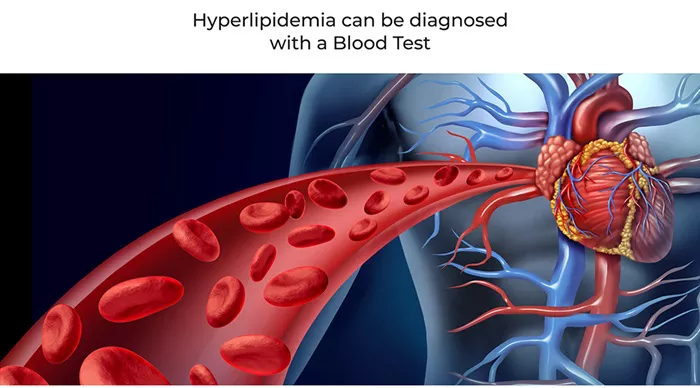Hyperlipidemia is a condition characterized by elevated levels of lipids (fats) in the bloodstream. Among its various forms, high-density lipoprotein (HDL) hyperlipidemia is a crucial aspect to understand for managing cardiovascular health. This article delves into the intricacies of HD hyperlipidemia, exploring its definition, causes, diagnosis, treatment options, and implications for overall well-being.
Defining HD Hyperlipidemia
High-density lipoprotein (HDL) is often referred to as “good cholesterol” due to its role in removing excess cholesterol from the bloodstream, thus reducing the risk of heart disease. HD hyperlipidemia occurs when there is an abnormal increase in HDL cholesterol levels, leading to potential health complications despite its favorable reputation.
Causes of HD Hyperlipidemia
The causes of HD hyperlipidemia can be multifactorial, often stemming from genetic predispositions, lifestyle factors, and underlying medical conditions. Genetics play a significant role, as certain genetic variations can influence HDL cholesterol levels. Additionally, lifestyle choices such as a sedentary lifestyle, poor diet high in saturated fats, excessive alcohol consumption, and smoking can contribute to elevated HDL levels.
Medical conditions such as diabetes, obesity, and metabolic syndrome can also impact HDL cholesterol levels, highlighting the interconnectedness of various health factors in lipid metabolism.
See Also: 5 Signs of High Cholesterol You May Not Know
Diagnosing HD Hyperlipidemia
Diagnosing HD hyperlipidemia typically involves a comprehensive lipid profile test, which measures various lipid levels in the blood, including HDL cholesterol. Healthcare providers may also consider other risk factors such as family history, lifestyle habits, and existing medical conditions to assess overall cardiovascular risk.
Treatment Approaches
Managing HD hyperlipidemia focuses on addressing underlying causes and reducing cardiovascular risk. Lifestyle modifications play a crucial role and may include:
Healthy Diet: Emphasizing a diet rich in fruits, vegetables, whole grains, and lean proteins while limiting saturated fats, trans fats, and cholesterol.
Regular Exercise: Engaging in regular physical activity to improve lipid levels, boost HDL cholesterol, and promote overall cardiovascular health.
Weight Management: Maintaining a healthy weight through a combination of diet and exercise to reduce strain on the cardiovascular system.
Smoking Cessation: Quitting smoking can significantly improve HDL levels and overall heart health.
In some cases, healthcare providers may prescribe medications such as statins or other lipid-lowering agents to further manage lipid levels and reduce cardiovascular risk.
Implications for Health And Well-being
Managing HD hyperlipidemia is crucial for preventing cardiovascular complications such as coronary artery disease, heart attacks, and strokes. By optimizing HDL cholesterol levels and addressing underlying risk factors, individuals with HD hyperlipidemia can enhance their overall health and well-being.
Conclution
In conclusion, HD hyperlipidemia represents an important aspect of lipid metabolism and cardiovascular health.
Understanding its causes, diagnosis, and treatment options empowers individuals and healthcare providers to effectively manage this condition and promote long-term heart health.
see also: Who Treats Hyperlipidemia
FAQs
What is the meaning of HLD in hyperlipidemia?
hyperlipidemia, “HLD” typically refers to “High LDL Cholesterol” or “High Low-Density Lipoprotein Cholesterol.” LDL cholesterol is often termed “bad cholesterol” because elevated levels can contribute to the buildup of plaque in the arteries, increasing the risk of heart disease and stroke.
The main cause of hyperlipidemia, which encompasses elevated levels of lipids (fats) in the bloodstream, can vary depending on the specific type of hyperlipidemia:
Primary Hyperlipidemia: This type of hyperlipidemia is often due to genetic factors, including inherited conditions such as familial hypercholesterolemia, familial combined hyperlipidemia, and familial dysbetalipoproteinemia. These genetic factors can lead to abnormalities in lipid metabolism, resulting in elevated cholesterol levels.
Secondary Hyperlipidemia: Secondary hyperlipidemia can result from various underlying medical conditions, lifestyle factors, medications, or hormonal imbalances. Medical conditions such as diabetes, obesity, metabolic syndrome, hypothyroidism, chronic kidney disease, and liver disease can all contribute to elevated lipid levels. Lifestyle factors such as a diet high in saturated fats and cholesterol, lack of physical activity, excessive alcohol consumption, and smoking can also play a role in secondary hyperlipidemia. Certain medications, such as corticosteroids, diuretics, beta-blockers, and antiretroviral drugs, can also impact lipid levels.
What is the main cause of hyperlipidemia?In the context of
Identifying the specific cause of hyperlipidemia is essential for developing an effective treatment plan and managing cardiovascular risk factors. This often involves a comprehensive evaluation by healthcare providers, including a lipid profile test, assessment of medical history, lifestyle habits, and potential underlying medical conditions.


